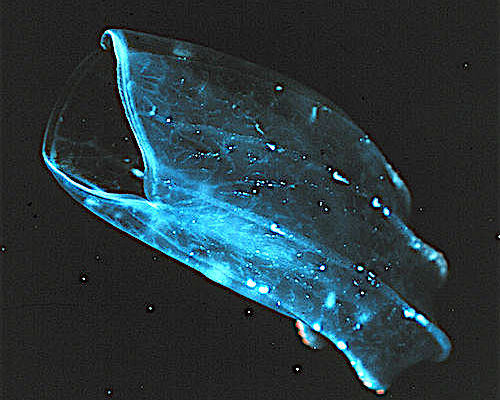Paleontologists have described two new species from the Cambrian period of Utah, which illuminate the early evolution of nervous and sensory features in ctenophores (comb jellies).
Ctenophores are a group of over 200 living species with a transparent gelatinous body superficially resembling that of a jellyfish.
While some studies suggest they might represent the earliest branching animals, others suggest a more traditional position as close relatives of jellyfish.
The two new species, named Ctenorhabdotus campanelliformis and Thalassostaphylos elegans, are a spectacular addition to the scant fossil record of the group.
The specimens were found in the Marjum Formation in the House Range of Utah, and represent the first ctenophore fossils ever discovered in the United States.
Source
Ctenophores are a group of over 200 living species with a transparent gelatinous body superficially resembling that of a jellyfish.
While some studies suggest they might represent the earliest branching animals, others suggest a more traditional position as close relatives of jellyfish.
The two new species, named Ctenorhabdotus campanelliformis and Thalassostaphylos elegans, are a spectacular addition to the scant fossil record of the group.
The specimens were found in the Marjum Formation in the House Range of Utah, and represent the first ctenophore fossils ever discovered in the United States.
Source
























